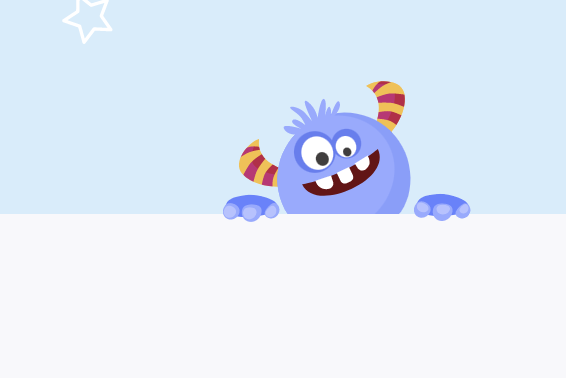The Global Digital Library (GDL) is a flagship initiative of the GBA. It is a web platform where high quality books can be accessed, printed, adapted/translated, and used in and out of classrooms worldwide. It is free to use and open source, meaning that the content and illustrations of the books are free for use by anyone, anywhere on any device, can be printed for home or commercial use, translated into any language or adapted to fit different contexts.
Global Digital Library
The GDL actively seeks high-quality early-grade reading materials in all languages for addition to its collection. If your organization has, or is creating such materials, please consider contributing to the global collection of openly licensed freely available books on the GDL.
Contributing to the GDL consists of five steps:
Creative Commons License - Ensure your materials carry an open license (e.g. CC-BY) that allows for adaptation.
Check the quality and accessibility of your books - For donor-funded materials, quality and accessibility checks are often part of the creation process.
Format your files - the books need to be in ePUB (e-book) format and each book must have a cover image in PNG format. There are various programs and procedures that allow for converting to these formats depending on how they were first created (see below).
Provide information (metadata) about the books so that that they are searchable (e.g. author, title, reading level) - the GBA provides a template for this below.
Place all files in a single folder and upload to online storage - the GBA can provide online storage if needed.
The GBA provides guidance and support for every step of this process.
Below are links to two documents that provide guidance for the entire process, for conversion to ePUB, metadata, and file transfer over to the GBA for materials created in InDesign or Bloom:
RESOURCE CENTER
Looking for guidance that you didn’t find above? Browse our resources to see if you can find the answer to your question. If not, feel free to email admin@globalbookalliance.org to request further guidance or clarification.
Converting to ePUB (e-book) from:
There are programs that convert directly from PDF to ePUB, but do not conserve the formatting of illustrations and text. This guidance note describes how to re-create a PDF story in MS Word and works best for simple readers.
It is highly recommended to convert to ePUB from the original files, rather than PDF.
Microsoft Word documents can be exported as ePUB files.
Licensing:
Creative Commons License Type Chooser
There are various types of open license. Most GDL materials use CC-BY. Use this web-based app to determine which works best for your materials.
Open Licensing of Primary Grade Reading Materials: Considerations and Recommendations
This Global Reading Network resource outlines the various concerns, rationale, and details of open licensing for donor-funded early grade reading and learning materials.
Accessibility:
Guide for creating accessible storybooks
SIL-Lead’s guide will help you make good decisions about images and text that will make your books more accessible to those with hearing or visual impairment.
Metadata:
Use this MS Excel template to provide all of the needed information about your books to the GDL. For example, author, title, language of the book.
Q&A
The following are questions we have received from projects that have submitted books to the GDL. Don’t see yours? Email admin@globalbookalliance.org
Licensing:
Q: What is the difference between the Creative Commons CC licenses?
A: All of the accepted licenses allow for download, use, and remixing of the content. This allows for translation and adaptation of content. Page 11 of this guide has more information:
CC-BY – “Attribution” - The content must be attributed to the original creator.
CC-BY-SA – “Attribution Share Alike” – The content must be attributed to the original creator. If content is adapted, the derivative work must be released under the same license.
CC-BY-NC – “Attribution NonCommercial” – The content must be attributed to the original creator. The content may not be used for profit or financial gain.
CC-BY-NC-SA – “Attribution NonCommercial Share Alike” – The content must be attributed to the original creator. The content may not be used for profit or financial gain. If content is adapted, the derivative work must be released under the same license.
Q: My books are licensed with CC BY 4.0 but I’m seeing others listed as CC BY 3.0. What is the difference?
A: The 4.0 refers to the version of CC license. Creative Commons updates its language and terms periodically and this number reflects the version of the license. All new materials should be licensed under the most up-to-date version of the CC license.
Q: Who chooses which license to use?
A: For donor-funded reading materials, licensing is generally an agreement between the donor who commissioned the work and the implementing partner who created the work, in coordination with the Ministries of Education or other government bodies who may have been involved in creating or approving the work. Many contracts awarded by USAID and other donors require materials produced to be openly licensed. The GDL recommends the least restrictive CC license (CC-BY) since it allows for maximal remixing, including updating content, translating, and adapting for context. This allows materials to be more flexible, and improved relevance and reach. Most USAID-created materials are licensed under CC-BY.
Q: Do I need to apply for a CC license? What is the process?
A: You do not need to apply for a CC license. Placing the words for the appropriate license (CC-BY, CC-BY-SA etc.) in the metadata spreadsheet is sufficient. There is no fee, and no administrative process beyond agreeing with the creator of the materials that they should be openly licensed, and declaring them so. The GDL will take care of the rest.
Formatting
Q: Why is the front cover an image file rather than ePUB? Why does it have to be separate?
A: The front cover image is used in various parts of the GDL, from the search, to the featured content, to the preview of the book file. An image, rather than a page of an ePUB document, is needed for these purposes.
Q: What if my InDesign file for the book cover also includes a back cover and spine?
A: Follow the instructions for Step 2, and then crop the exported image to include just the front cover. The spine and back cover are not needed for a GDL submission.
Q: Does the GDL require back covers also?
A: The back covers are not specifically required as part of the ePUB files. However, if they contain relevant information about the project, author, Ministry collaboration etc. The back cover can be included with the interior content to make it available at the end of the book. The back cover is used for commercial printing and so must be included in the InDesign original file(s).
Q: There are some mostly blank pages with project and copyright information. Should these be deleted? Does this count as a cover?
A: These important pages must be saved as part of the interior of the book. These pages contain important information about licensing and commissioning agency. Do not delete these pages.


